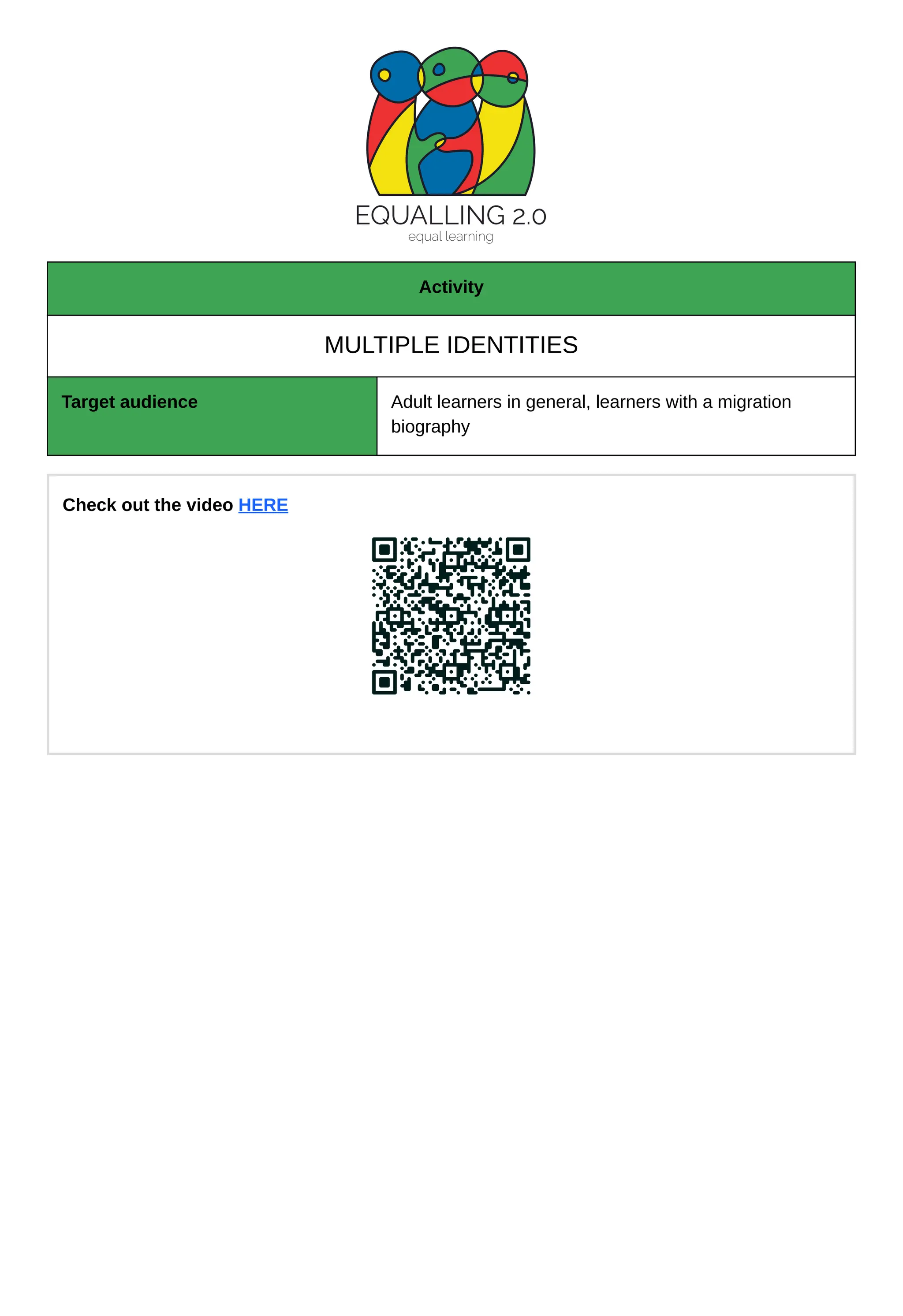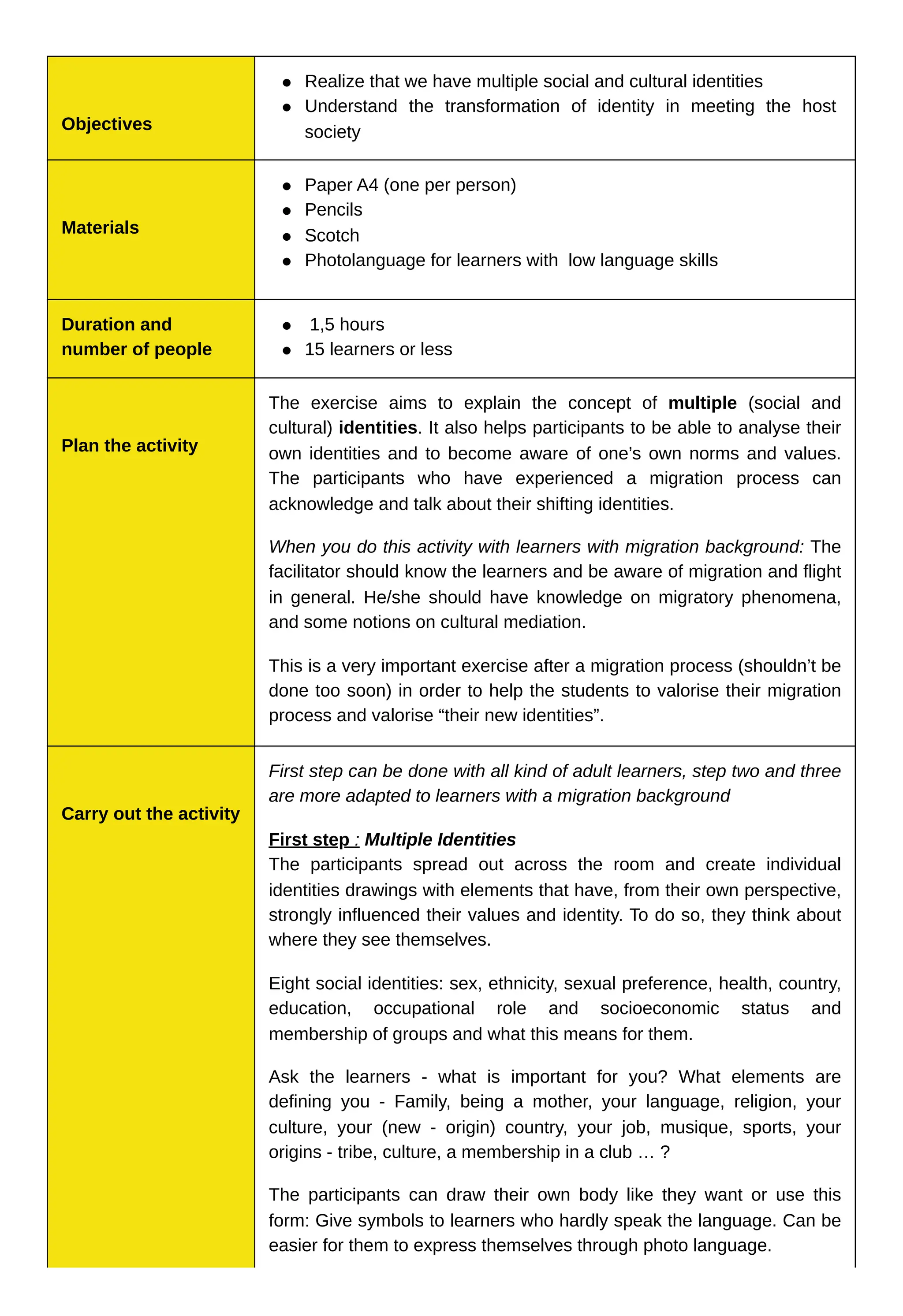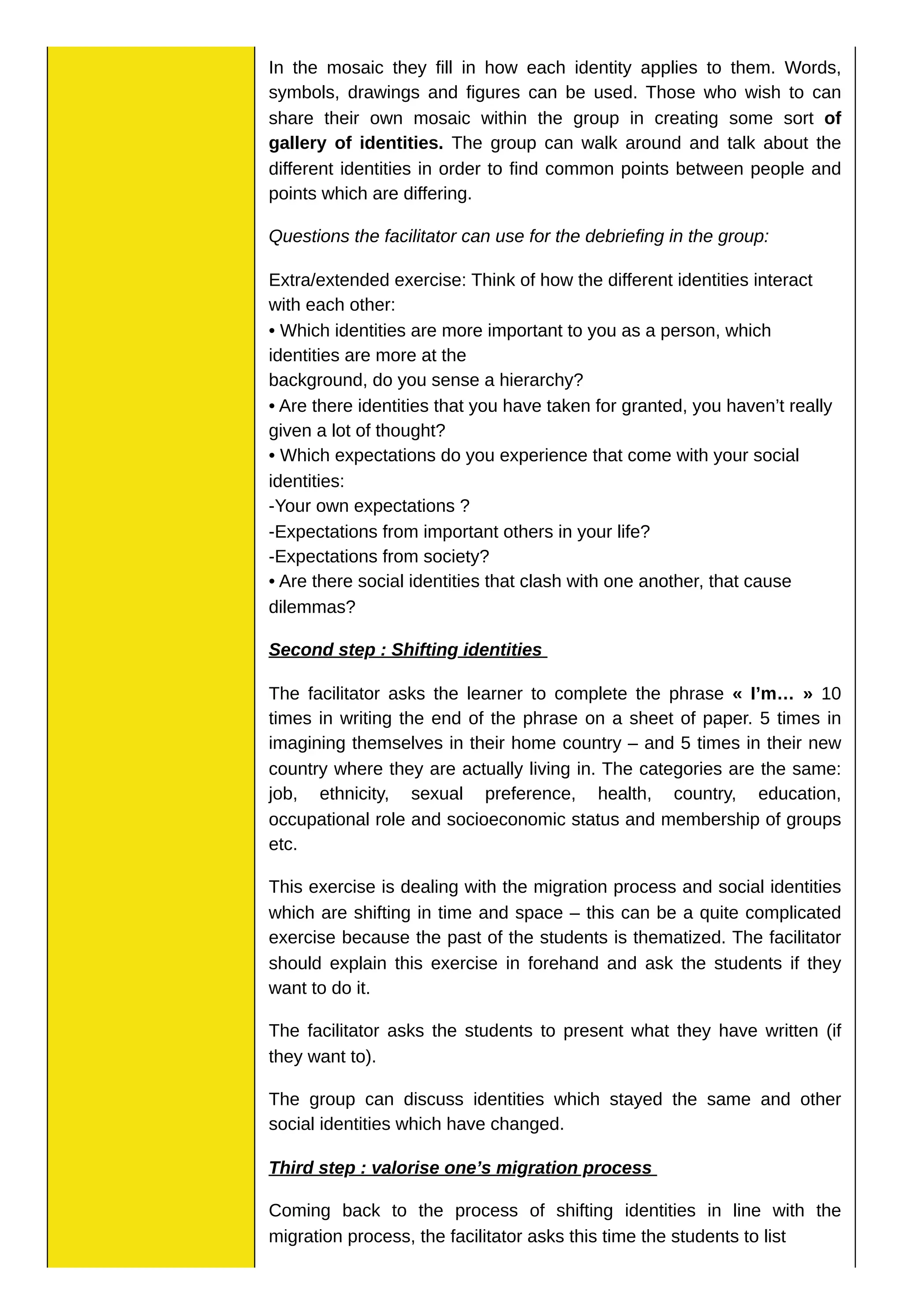This activity aims to help adult learners, especially those with a migration background, understand that individuals have multiple social and cultural identities that may shift over time and contexts. It involves three steps: (1) Participants draw representations of the identities that influence their values, such as gender, ethnicity, education and group memberships; (2) Those with a migration background indicate how identities have changed between their origin and host countries; (3) Learners reflect on personal resources and competencies gained through migration that help with integration. Debriefing discussions center on exploring intersections between identities and how they have remained the same or changed through migration. The activity aims to help valorize learners' migration experiences and shifting identities.



![This project has been funded with support from the European Commission. This publication [communication] reflects the
views only of the author, and the Commission cannot be held responsible for any use which may be made of the information
contained therein.
they needed to succeed in their migration and to integrate in the new
home country.
This process helps the students to be aware of their active role in the
migration process, what they learned and who they are now.
After an individual brainstorming per participant, the students bring their
results together in a big collective brainstorming. Those resources and
competences can be integrated in the CV of the students!!
all their personal resources / competences (curiosity, adaptability,
communication skills, etc), in particular the personal resources they
consider as important to overcome obstacles in daily life.
and external resources (community, social network, institutional
help, etc)
Debriefing and
evaluation
It’s important that all learners take an active part in the activity. The
activity can be individually adapted to learners with difficulties in helping
them to create their figure of multiple identities. If it is too complicated
for a learner to talk about their creation, the facilitator can present for
the learner if he/she is fine with it.
The activity can be evaluated in the number and quality of creations
(multiple identity figures) and by qualitative assessment : Did everybody
participate ? Could all learners freely express themselves? Are the
learners satisfied after the activity? Did the activity help to create
connections between learners, which haven’t been established before?
Accessibility
This activity can be adapted to learners with low language skills in the
new country of residence by using photo language of items
representing “identities” and personal “values” like a picture of a family,
sports, religions, job, etc.
This activity can be adapted to people with visual impairment by making
everything oral.](https://image.slidesharecdn.com/templatebpequalling2-1-240123221052-1369497c/75/Template-BP-Equalling-2-1-pdf-4-2048.jpg)